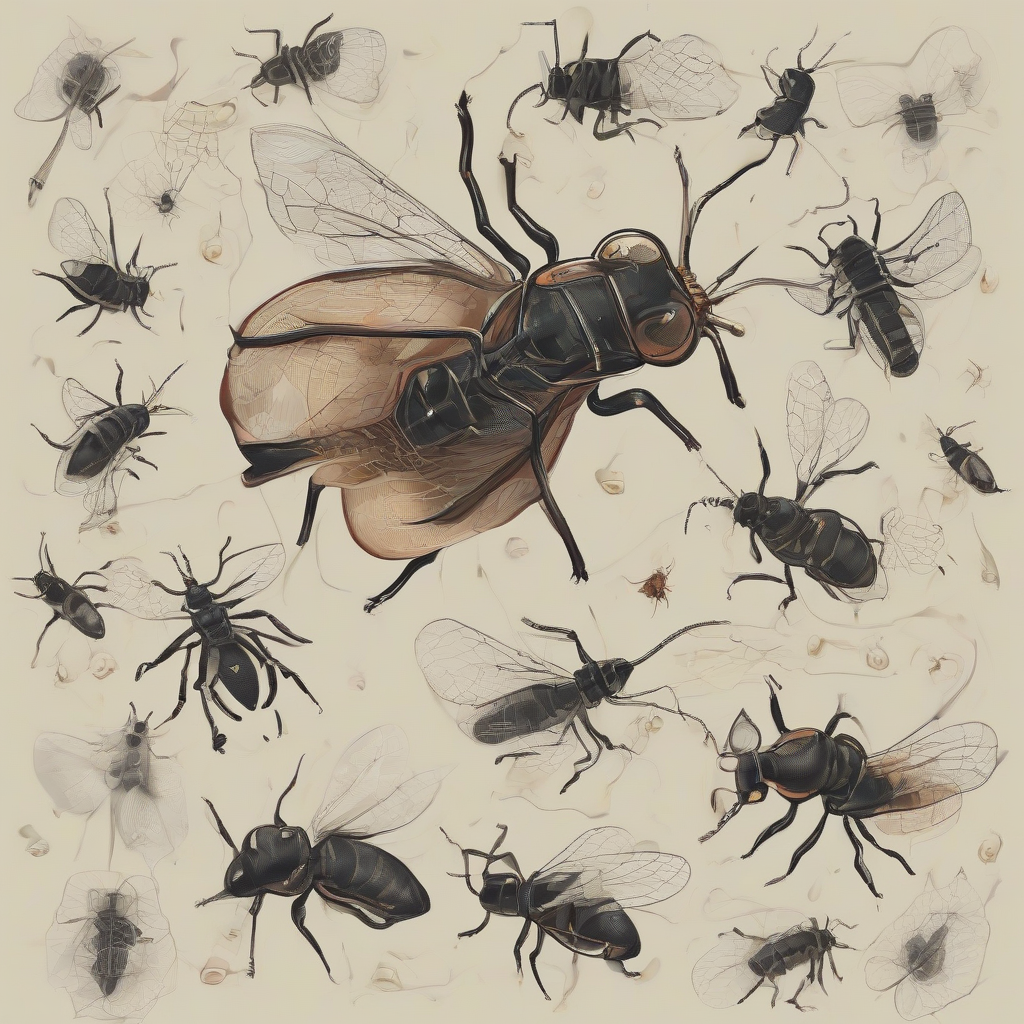Banishing Pests Naturally: A Comprehensive Guide to Non-Toxic Pest Control
Traditional pest control methods often rely on harsh chemicals that can harm human health, pets, and the environment. Non-toxic pest control offers a safer and more sustainable alternative, leveraging natural methods to manage pest populations effectively. This guide delves into various strategies, empowering you to protect your home and garden without resorting to harmful pesticides.
Understanding the Importance of Non-Toxic Pest Control
The widespread use of synthetic pesticides has led to numerous concerns, including:
- Human health risks: Exposure to certain pesticides can cause respiratory problems, skin irritation, neurological damage, and even cancer.
- Pet safety: Pets are particularly vulnerable to pesticide poisoning, as they may ingest or absorb chemicals through their skin.
- Environmental damage: Pesticides can contaminate soil, water, and air, harming beneficial insects, birds, and other wildlife. They can also persist in the environment for extended periods, leading to long-term ecological damage.
- Pest resistance: Overuse of pesticides can lead to the development of resistant pest populations, making control increasingly difficult.
Non-toxic pest control prioritizes the health and safety of humans, animals, and the environment. It focuses on preventing pest infestations in the first place, using natural deterrents, and employing minimally disruptive control methods when necessary.
Preventing Pest Infestations: Proactive Strategies
The most effective pest control is preventative. By addressing potential attractants and creating an inhospitable environment for pests, you can significantly reduce the likelihood of infestations.
Cleanliness and Sanitation:
- Regular cleaning: Thoroughly clean your home and garden regularly, removing food scraps, spilled liquids, and other attractants. Pay special attention to kitchens, bathrooms, and areas where food is stored.
- Proper food storage: Store food in airtight containers to prevent pests from accessing it. Regularly check pantries and cupboards for signs of infestation.
- Garbage disposal: Dispose of garbage promptly and use tightly sealed bins to prevent attracting pests.
- Decluttering: Reduce clutter, as pests often hide in cluttered areas.
Maintaining a Healthy Environment:
- Yard maintenance: Keep your lawn mowed, trim shrubs and trees, and remove leaf litter to reduce hiding places for pests.
- Proper drainage: Ensure proper drainage to prevent moisture build-up, which can attract certain pests.
- Sealing cracks and crevices: Seal any cracks or gaps in your home’s foundation, walls, and windows to prevent pests from entering.
- Repairing leaky pipes: Address any leaky pipes or faucets to prevent moisture problems that attract pests.
Natural Pest Control Methods
When preventative measures are insufficient, various natural methods can effectively control pest populations without the use of harmful chemicals.
Physical Removal:
- Trapping: Use traps specifically designed for the type of pest you’re dealing with. Glue traps, sticky traps, and snap traps are common options.
- Vacuuming: Regularly vacuum carpets, furniture, and other areas where pests may be hiding.
- Handpicking: For small infestations, you may be able to handpick and remove pests.
Natural Repellents:
- Essential oils: Certain essential oils, such as peppermint, tea tree, and eucalyptus, can repel various pests. Dilute them with water and spray on affected areas.
- Diatomaceous earth: This natural powder is effective against many insects, including ants, fleas, and bed bugs. Apply it to affected areas, ensuring proper ventilation.
- Neem oil: This oil derived from the neem tree is a natural insecticide and fungicide. It can be used to control a variety of pests, including aphids and mites.
- Citrus peels: The strong scent of citrus peels can repel some pests, such as ants and cockroaches. Place peels near entry points or areas where pests are active.
- Vinegar: White vinegar can be used to clean surfaces and eliminate odors that attract pests.
Biological Control:
- Beneficial insects: Introduce beneficial insects, such as ladybugs and praying mantises, to your garden to control pest populations naturally.
- Nematodes: These microscopic worms are effective against various soil-dwelling pests.
- Birds and other predators: Encourage birds and other beneficial animals to visit your property by providing birdhouses and other habitats.
Dealing with Specific Pests
Different pests require different control strategies. Here are some tips for dealing with common household and garden pests:
Ants:
- Identify the ant species to determine the best control method.
- Eliminate food sources and water sources.
- Use ant baits or natural repellents such as peppermint oil or vinegar.
- Seal cracks and crevices to prevent entry.
Cockroaches:
- Maintain a clean and dry environment.
- Eliminate food sources and water sources.
- Use borax or diatomaceous earth.
- Consider professional help for severe infestations.
Rodents:
- Seal entry points.
- Remove potential food and nesting materials.
- Use humane traps.
- Consider professional help for severe infestations.
Flies:
- Keep food covered.
- Clean up spills promptly.
- Use fly traps or swatters.
- Install screens on windows and doors.
Other Pests:
Adapt these methods to specific pests, researching natural solutions for specific insects, rodents, or other creatures impacting your home or garden.
When to Seek Professional Help
While many pest problems can be managed with non-toxic methods, there are instances when professional help is necessary:
- Severe infestations: If you have a large infestation that you cannot control on your own.
- Health concerns: If you suspect a pest infestation is causing health problems.
- Specialized knowledge: Certain pests require specialized knowledge and equipment for effective control.
When choosing a pest control professional, opt for one that uses Integrated Pest Management (IPM) techniques and prioritizes non-toxic methods whenever possible.
Sustaining a Pest-Free Environment
Non-toxic pest control is an ongoing process. By consistently implementing preventative measures and utilizing natural methods, you can create a sustainable and pest-free environment for your home and garden. Regular monitoring and prompt action are crucial for preventing infestations from becoming out of control.
